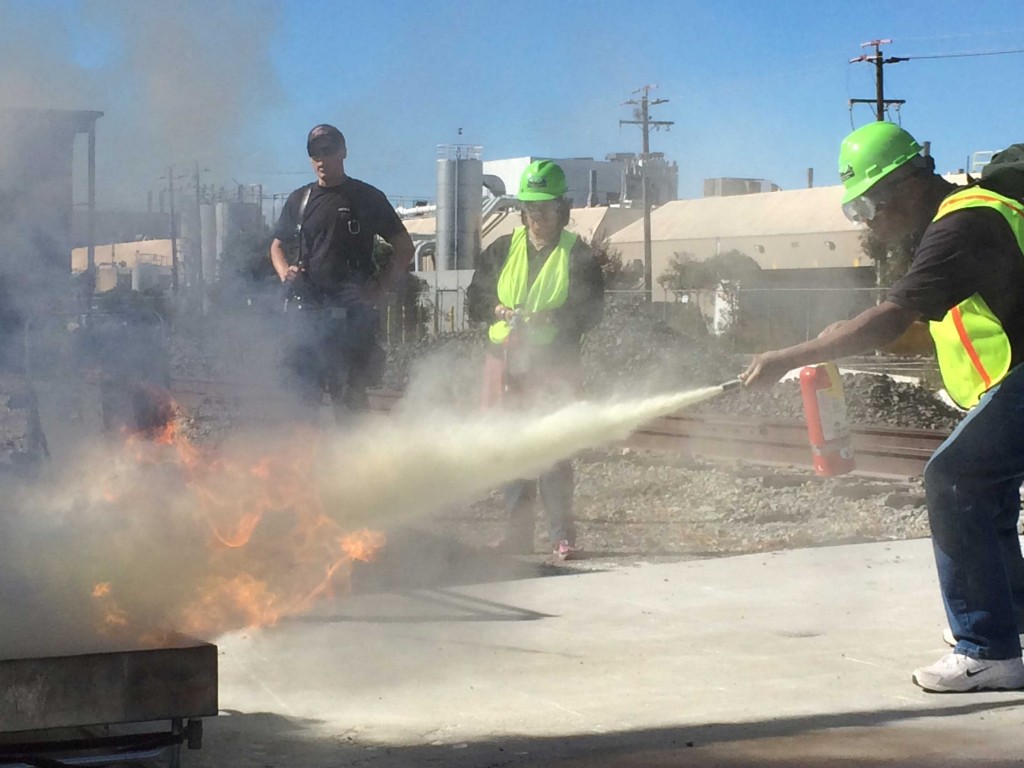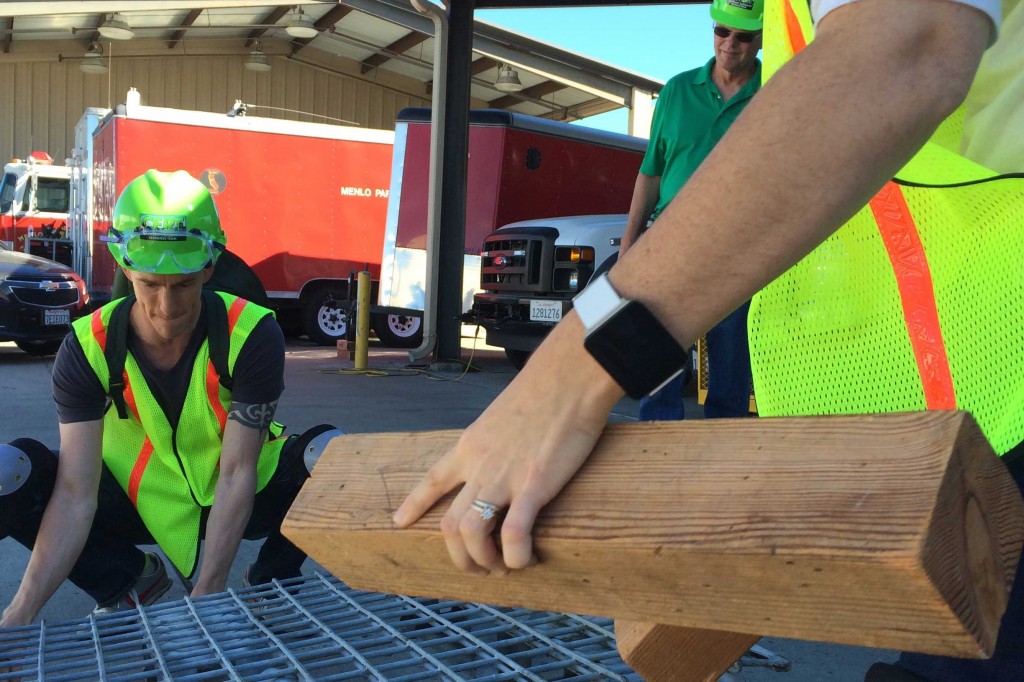The Menlo Park Fire Protection District — anticipating it won’t have enough firefighters to handle most initial emergency calls when the next big earthquake strikes — is expanding its training of volunteer civilians to help with first aid and rescue.
The push to train more civilians comes as geophysicists at the U.S. Geological Survey predict an earthquake of magnitude 7 or greater could happen today on the San Andreas Fault, which runs next to cities on the Peninsula. Twenty-five years ago, the massive fault produced the 6.9-magnitude Loma Prieta earthquake, resulting in 63 deaths and 3,757 injuries.
Most of the 90 firefighters in the Menlo Park Fire Protection District live outside the area — some as far away as the Central Valley — and could have trouble getting to the district after a major disaster. At any given time, 25 firefighters on duty serve about 100,000 residents in Menlo Park, East Palo Alto, Atherton and unincorporated areas of San Mateo County.
The district’s ratio of 0.9 firefighters per 1,000 residents is similar to that of Mountain View and Redwood City, but lower than the nationwide median of 1.3 firefighters per 1,000 people for cities of comparable size, according to the National Fire Protection Association.
More volunteer civilians are needed to help supplement the firefighting ranks, which will never be enough to handle most emergencies after a destructive earthquake, said fire chief Harold Schapelhouman, a veteran firefighter on duty during the 1989 Loma Prieta earthquake.
Schapelhouman said firefighters would need to prioritize the calls and address the neediest victims, like those pinned down in crumbled buildings, first. “For low-level priority calls, worst-case scenario, plan on being on your own and able to take care of yourself for 72 hours or more,” he said.

The Menlo Park Fire Protection District has trained hundreds of volunteers through its program since 2004, but only dozens have stayed active within the program, said Schapelhouman, and part of what the fire department is doing is making sure those people renew their skills.
“We are lucky we have a pretty good and dedicated group,” said Schapelhouman, who was also part of rescue operations after Hurricane Katrina. “But I’m here to tell you: it’s not big enough.”
After the Loma Prieta earthquake, most 911 callers – had they had minimal training – would have been easily able to solve their problems, such as knowing how to turn a gas valve off.
Unlike Loma Prieta times, many residents today store phone numbers on mobile devices that won’t work after a disaster, when electricity and the Internet will likely be out. Schapelhouman recommends keeping printed copies of key information, learning CPR and first aid, and storing food and water supplies. “You got to go back to the basics to prepare for one of these things,” he said.
To that end, the district certifies residents in basic disaster response skills at a three-day training at fire stations. Fire protection officials also plan to recruit more residents for shorter classes taught by certified volunteers in the community. An important target is the younger, more diverse demographic moving to the area because of tech jobs.
But this month on Nov. 1, the district took the program a step further: for the first time ever, volunteers and firefighters simulated a post-earthquake scenario at training grounds littered with wrecked vehicles and debris resembling collapsed buildings. During this exercise, thirty volunteers divided in teams that dug out victims from under rubble piles, checked for major injuries and reported to firefighters arriving at the scene.
Fire officials say conducting this type of simulation at least once a year from now on, will help build a network of “neighborhood leaders” that firefighters can rely on to manage other volunteers, and assess damage and urgent medical needs after a disaster.
One such leader is Steve Taffee, the program’s coordinator in the Willows neighborhood in Menlo Park. Taffee was living in the Midwest at the time of Loma Prieta, and he was struck by TV and newspaper images of civilians putting out fires and rescuing victims. Those images inspired him to join the community emergency response team 10 years ago.
“Moving to California of course I was scared of earthquakes,” said Taffee, who has done the emergency response training several times and became a trainer. “I wanted to do everything I could to take care of myself, take care of my family and my neighbors in the event of an earthquake.”
This summer’s Napa earthquake sparked interest among Menlo Park residents to sign up for the fire district’s emergency response training.

One recent Saturday at Menlo Park’s Fire Station 77, Matt Clements practiced rescuing a dummy from under a heavy metal crate. Clements and other volunteers stacked wooden blocks under two sides of the crate, lifting it high enough for the dummy to be pulled out. He conceded that before this training, he had never shut off a gas valve, which would be crucial to protect his family and neighbors if his home smelled like gas after an earthquake.
“First thing I’m going to do is going to look for my two-year old daughter,” said Clements, a patent lawyer who lives in an apartment. “But assuming I know where her and my wife are, and that they are safe, I’ll start checking for gas and checking for structural hazards … brick that’s fallen or glass that’s broken.”
A few feet away, firefighters lit a blaze fueled by gas in a metal cart while Ashok Popat and other trainees looked on nervously and clutched fire extinguishers. Upon a firefighter’s signal, Popat, a Google researcher, approached the fire, pointed his extinguisher and efficiently dozed the flames off.
“What I had in mind mostly was sweeping and aiming for the base of the fire, which is what I remember from last class. Seemed to work,” said Popat of his first experience using an extinguisher. “I’ve always wondered what it was like to use one. I recently bought one for home, so now I actually know what it’s like to use it.”
